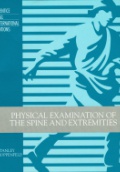Description
Designed for ease of use in the clinical setting, this up-to-date
resource provides all of the essential information needed on equine
emergency medicine and surgery. In a logical, clear presentation, the
reference outlines step-by-step direction of the procedures needed to
stabilize the equine patient. Color illustrations enhance the written
text. The text is updated throughout and includes a number of new
chapters and illustrations, as well as aesthetic changes that make key
information easier to locate. Authored by experts in the field, this
one-of-a-kind manual presents data on principles and procedures, organ
system examination, neonatology, shock and temperature related
problems, interpretation of lab tests, pharmacology and toxicology, and
management of special problems.
Contents
PART ONE: Emergency Medical and Surgical Principles and Procedures
Section I: General Diagnostic and Therapeutic Procedures
1. Blood Collection
2. Medication Administration
3. Intravenous Catheter Placement
4. Intraosseous Infusion Technique
5. Regional Perfusion
6. Bacterial,
Fungal, and Viral Infection Diagnoses
7. Biopsy Techniques
8. Endoscopy Techniques
9. Ultrasound Examination
Section II: Respiratory
System
10. Nasotracheal and Orotracheal Tube Placement
11. Transtracheal Aspiration and Bronchoalveolar Lavage
12. Nasal Oxygen Insufflation
13. Assisted Ventilation
14. Tracheotomy
15. Paranasal Sinus Trephination
16. Thoracocentesis and Chest Tube Placement
Section III:
Gastrointestinal System
17. Aging Guidelines/Dentistry
18. Nasogastric Tube Placement
19. Abdominocentesis and Peritoneal Fluid Analysis
20. Cecal Trocharization
21. Esophagostomy
Section IV: Genitourinary System
22. Urinary Tract Catheterization
Section V: Musculoskeletal
System
23. Local Anesthesia for the Diagnosis of the Lameness
24. Arthrocentesis and Synovial Fluid Analysis
25. Temporomandibular Arthrocentesis
26. Endoscopy of the Navicular Bursa
Section VI: The Eye
27. Corneal Scraping
28. Fluorescein Staining
29. Nasolacrimal Duct Cannulation
30. Nerve Blocks/eye
31. Subpalpebral Catheter Placement
Section VII: Central Nervous System
32. Cerebrospinal Fluid Collection
33. Caudal
Epidural Catheterization
PART TWO: Organ System Examination, Neonatology, Shock, and Temperature-Related Problems
Section I: Organ System
Examination
34. Cardiovascular System
35. Gastrointestinal Emergencies and Other Causes of Colic
36. Integumentary System
37. Liver Failure;
Hemolytic Anemia
38. Blood Coagulation Disorders
39. Musculoskeletal System
40. Nervous System
41. Ophthalmology
42. Reproductive System
43. Respiratory System
44. Urinary System
Section II: Neonatology
45. High-Risk Pregnancy
46. Neonatology
47. Foal-Cardiopulmonary
Section III: Shock and Temperature-Related Problems
48. Shock and Systemic Inflammatory Response Syndrome
49. Temperature-Related Problems
PART THREE: Laboratory Tests
50. Emergency Measurements of CBC, Serum, Chemistries, Blood Gas, and Body Fluid in Equine Practice
51.
Cytology
PART FOUR: Pharmacology and Toxicology
52. Pharmacology and Adverse Drug Reactions
53. Toxicology
PART FIVE: Management of
Special Problems
54. Disaster Medicine
55. Management of Acute Pain
56. Anesthesia for Field Emergencies and Euthanasia
57. Nutritional
Guidelines for the Injured Horse
58. Emergency Diseases Seen in Europe
Emergency Drug Dosages
Appendix I: Reference Values
Appendix
II: Worming Schedule
Appendix III: Immunization Schedules
Appendix IV: Product Manufacturers
Appendix V: Breed Chart
Appendix VI: Long
Bone Physeal Fusion Times
Appendix VII: Trade/Generic Names Used in Equine Practice
Appendix VIII: Susceptibility Patterns of Organisms
Isolated from Equine Submissions
Appendix IX: Resources for the Veterinarian for Information on Terrorist Attacks and Emergency Preparedness
